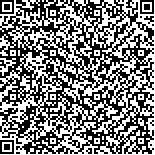| 引用本文: | 顾智强,张振华,徐琰雯,顾梦娇,徐强,朱自强,钟伯坚.南极绿藻中类菌胞素氨基酸对UV-B胁迫的响应[J].海洋科学,2018,42(12):37-46. |
| |
|
| 摘要: |
| 南极上空臭氧层的破坏导致了紫外辐射日益增强,高强度的UV-B辐射会造成细胞中DNA的损伤,影响蛋白质、脂类和色素的代谢过程。生长在南极的绿藻具有一系列防御机制以应对增强的UV-B辐射,其中类菌胞素氨基酸(Mycosporine-like amino acids,MAAs)是一类重要的紫外防御物质。为探究类菌胞素氨基酸对UV-B辐射的响应,本文以南极冰藻(Chlamydomonas sp.ICE-L)、针丝藻(Raphidonema nivale Lagerheim,NIES-2290)和胶球藻(Coccomyxa subellipsoidea E.Acton,NIES-2166)三种生活在南极的绿藻为材料,采用UV-B辐射胁迫(强度0.35 W/m2,短时处理3 h),并通过液相色谱-质谱联用法检测类菌胞素氨基酸的种类和含量的变化。Mycosporine-glycine为三种南极绿藻中共有的MAAs,在UV-B辐射胁迫下三种南极绿藻中Mycosporine-glycine含量变化不尽相同,表明不同的南极绿藻中MAAs对UV-B辐射的响应各有其特性。首次在绿藻(南极冰藻和胶球藻)中检测到Gadusol。Gadusol作为MAAs的合成前体,它的合成积累使得生活在海冰环境的南极冰藻和胶球藻具有良好的抗UV-B辐射能力。其中南极冰藻抗紫外能力最强,这可能得益于不同MAAs间的动态转化,含量升高的Palythine及Usujirene/Palythene可能对南极冰藻的紫外屏蔽起着至关重要的作用。 |
| 关键词: 类菌胞素氨基酸(MAAs) UV-B辐射 液相色谱-质谱联用技术 南极绿藻 |
| DOI:10.11759/hykx20180928001 |
| 分类号:Q945 |
| 基金项目:江苏省六大人才高峰资助项目(2016-XNY-035);江苏省高校青蓝工程资助项目;江苏高校品牌专业建设工程资助项目;江苏省高校自然科学研究重大项目(16KJA180002);江苏省科协青年科技人才托举工程。 |
|
| Study of response of mycosporine-like amino acids in Antarctic green algae to UV-B radiation |
|
GU Zhi-qiang, ZHANG Zhen-hua, XU Yan-wen, GU Meng-jiao, XU Qiang, ZHU Zi-qiang, ZHONG Bo-jian
|
|
Jiangsu Key Laboratory for Biodiversity and Biotechnology, College of Life Sciences, Nanjing Normal University, Nanjing 210023, China
|
| Abstract: |
| The destruction of the ozone layer over Antarctica has led to an increase in UV-B radiation, and Antarctic green algae possess a series of defense mechanisms to cope with this enhanced UV-B radiation, of which photo-protective mycosporine-like amino acids (MAAs) are one of the most important. In this study, we used three Antarctic green algae (Chlamydomonas sp. ICE-L, Raphidonema nivale Lagerheim and Coccomyxa subellipsoidea E.Acton) to investigate the response of MAAs to UV-B radiation. To delineate the qualitative and quantitative features of MAAs under UV-B radiation (0.35 W/m2, 3 hours), we used a liquid chromatograph-mass spectrometer (LC-MS). Mycosporine-glycine is a common MAA among the three Antarctic green algae. The mycosporine-glycine content varies in the three algae under UV-B radiation stress, which indicates species-specific responses of MAAs to UV-B radiation. The existence of gadusol was detected for the first time in Antarctic green algae (Chlamydomonas sp. ICE-L and Coccomyxa subellipsoidea E.Acton). Gadusol is a synthetic MAA precursor, and its accumulation might contribute to the UV-B radiation resistance in Chlamydomonas sp. ICE-L and Coccomyxa subellipsoidea E.Acton. Dynamic transformation between different MAAs might account for the most significant UV-B radiation resistance of Chlamydomonas sp. ICE-L. The increased contents of palythine and usujirene/palythene are likely to play important roles in the UV shielding of Chlamydomonas sp. ICE-L. |
| Key words: mycosporine-like amino acids UV-B liquid chromatograph-mass spectrometer antarctic green algae |
